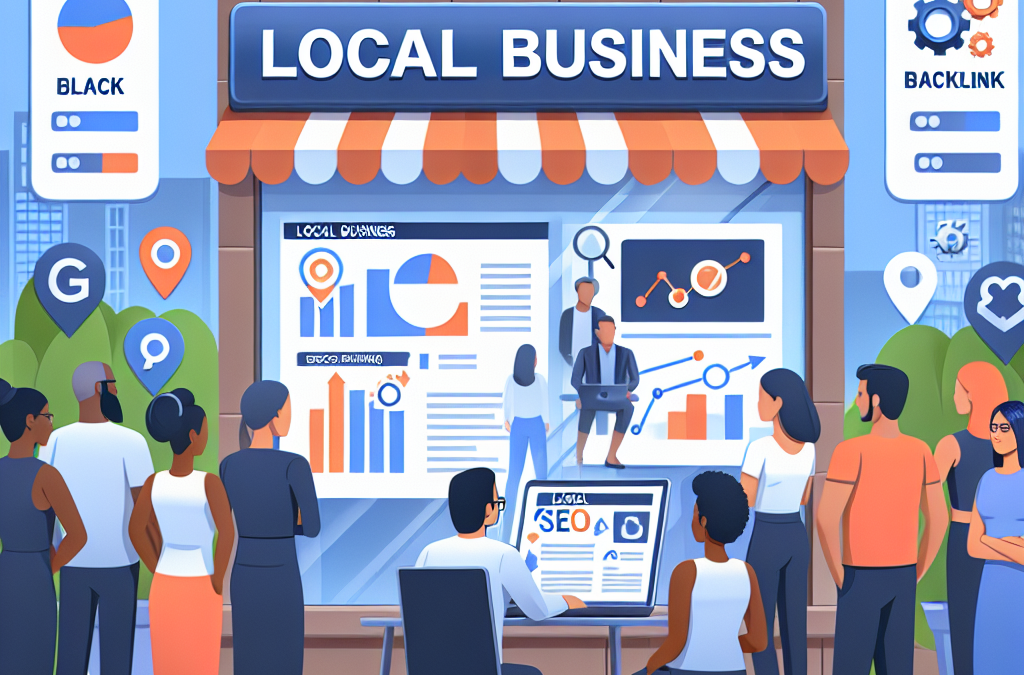Understanding Local SEO
What is Local SEO?
Let me start by sharing what local SEO really means. It’s all about optimizing your online presence to attract more business from relevant local searches. Think about it: when someone Googles “best pizza near me,” they’re looking for options that are within a specific geographic area. That’s where local SEO comes in!
This strategy involves using various techniques to help your business show up in those local search results. It’s kinda like waving a big flag that says, “Hey, we’re right here, come visit us!” And trust me, when done right, local SEO can be a game changer for small businesses.
Local SEO is especially important if you’re running a brick-and-mortar store. Studies show that local searches often lead to store visits and purchases. So if you’re not optimizing for local, you’re potentially missing out on a ton of customers!
The Importance of Google My Business
One of the first stops on the local SEO train is getting your Google My Business (GMB) listing set up. This little gem is a powerful tool that helps you manage how your business appears on Google, including those snazzy map results and local packs.
Getting your GMB listing right can significantly improve your chances of being found. I always tell my clients to fill it with accurate info—your business name, address, phone number, and hours of operation should be spot on. Also, don’t forget to keep it updated; customers don’t appreciate finding a place closed when they thought it was open!
Another cool feature about GMB is that it allows you to interact with customers through reviews and Q&A. Engaging with your audience is crucial, and this platform provides direct lines of communication that can bolster your reputation and improve trust in your brand.
Keywords Matter!
Alright, let’s talk about keywords. You can have the best website in the world, but if it’s not optimized for the right keywords, it might as well be invisible. Start with local keywords that relate to your business. For instance, if you own a bakery in Austin, things like “Austin bakery” or “best muffins in Austin” are great keywords to sprinkle throughout your site.
Once you have a list of keywords, make sure to integrate them naturally into your website’s content, headers, and meta descriptions. The trick is to sound human while still targeting those terms. You wanna be relatable and conversational, just like I’m doing here!
Additionally, consider using tools like Google Keyword Planner or Ubersuggest to find keyword opportunities. The better your keywords, the more likely potential customers will find you when they search online.
Optimizing Your Website for Local Search
The Role of On-Page SEO
On-page SEO is key in ensuring that local customers can find you. This involves optimizing various parts of your website, like title tags, headings, and content, to include local identifiers. I always encourage my clients to emphasize their location in these elements.
A great trick is to create location-specific pages if you have multiple locations. This way, you provide tailored information for each area, which really helps with local relevance. Trust me, Google loves seeing that you’re taking local intent seriously.
Don’t forget about optimizing images on your site too! Using descriptive file names and alt tags can boost your search visibility and keep your site looking sharp. It’s all about the little details that add up to a great overall user experience.
Mobile Optimization is Crucial
With so many people using their phones to search for local businesses, ensuring that your site is mobile-friendly is a must. I’ve seen businesses lose out on customers simply because their sites weren’t optimized for mobile devices. You don’t want to be that business!
Make sure your website design is responsive, meaning it adapts well to different screen sizes. Also, check the loading speed; nobody likes a slow website. If visitors have to wait too long for your site to load, they’ll likely bounce right back to Google and check out your competitors instead.
Incorporating a clean, easy-to-navigate layout will also help. Aim for a user-friendly experience because when users can find what they’re looking for quickly, they’re more likely to give you a visit!
Local Link Building Strategies
Link building is another crucial aspect of boosting your local SEO presence. By establishing local backlinks, you can improve your site’s authority and visibility on search engines. Start by connecting with other local businesses or organizations. You’d be surprised at how many opportunities there are for collaboration!
Another effective strategy is to engage with local bloggers and influencers. Their endorsements can help spread the word about your business while also giving you a backlink. This mutual support can work wonders for both parties, building community ties while expanding your reach.
Lastly, consider local listings and directories. Having your business listed on platforms like Yelp, Yellow Pages, or local business directories can provide valuable backlinks and enhance your visibility. Just like GMB, these listings ensure that potential customers see your business when they are searching for services in your area.
Creating Quality Content Regularly
The Power of Blogging
Let’s chat about content. Regularly publishing high-quality blog posts is not just a good idea; it’s a must for your local SEO strategy. Blogging helps establish your business as an authority in your niche while also engaging your local audience.
Focus on topics relevant to your community or industry. For example, if you own a plant shop, consider writing posts about caring for local plants or seasonal gardening tips. This type of content can draw in local customers who might be searching for those specific queries.
Plus, regular blogging provides new content for Google to index. The more you publish, the more chances you have to show up in search results. It’s a win-win scenario if you ask me!
Utilizing Video Content
Don’t underestimate the power of video content! In today’s digital landscape, videos are incredibly engaging and highly shareable. You could create videos showcasing your products, doing tutorials, or sharing customer testimonials. It gives a face to your brand, making it more relatable.
Host these videos on platforms like YouTube and share them on social media too. Just ensure to optimize the video descriptions and include local keywords. This helps in reaching a broader audience while staying relevant to your local area.
The best part? Video content can help keep visitors on your site longer, which in turn, can positively impact your SEO ranking. If you haven’t dipped your toes into video yet, now’s the time!
Engaging with Your Audience on Social Media
Social media is more than just a platform for marketing; it’s a way to connect with your customers. Engaging with your audience through platforms like Facebook, Instagram, or Twitter can significantly boost your local visibility.
Share valuable content that’s relevant to your community. Consider running local contests or promotions; this encourages user engagement and spreads the word about your business. Plus, when people tag their friends, it can amplify your reach exponentially!
And remember, responding to comments and messages promptly is crucial. Building relationships is key in local business, and social media is a fantastic avenue for that. Show customers that you care and appreciate their support!
Monitoring and Adjusting Your Strategy
Using SEO Tools
Now that you’ve set the ball rolling, it’s essential to monitor your SEO performance over time. SEO isn’t a one-and-done deal; it requires regular check-ups and adjustments. Tools like Google Analytics provide insights into where your traffic is coming from, helping you understand what works and what doesn’t.
By analyzing your website traffic and user behavior, you can identify which strategies perform best. Is one blog post driving more traffic than others? Maybe it’s time to invest more in that topic or content type!
Additionally, keep an eye on your rankings for local keywords. If you notice any fluctuations, it might signal a need to tweak your strategies. SEO is a dynamic field, and being attuned to these insights will ensure you stay ahead of the game!
Encouraging Customer Reviews
Don’t underestimate the power of online reviews. They can make or break your local business reputation. Encourage satisfied customers to leave positive reviews on your GMB listing or other platforms. These reviews not only help with local SEO but also build trust with potential customers.
I often suggest having a system in place to respond to reviews, both positive and negative. Acknowledging feedback shows you value customer opinions, which can enhance your reputation in the long run.
And here’s a tip: try to make the review process as easy as possible. A follow-up email with direct links can prompt happy customers to share their experiences. It’s all about keeping the momentum going!
Staying Updated with SEO Trends
Lastly, SEO is constantly evolving. It’s crucial to stay updated with the latest trends and algorithm changes. Follow SEO blogs, join online communities, or participate in webinars. The more knowledge you have, the better you can adapt your strategies!
I personally recommend subscribing to newsletters from platforms like Moz or SEMrush. They regularly share valuable insights that can greatly influence your local SEO approach.
Be proactive about learning and tweaking your strategies based on new data or guidelines. Remember, the goal is ongoing improvement, so don’t be afraid to experiment with your approach!
FAQs
1. What is Local SEO?
Local SEO focuses on optimizing your online presence to attract more customers from relevant local searches. It helps your business show up in local search results, making it easier for nearby customers to find you.
2. How important is Google My Business for local SEO?
Google My Business is crucial for local SEO! It helps you manage how your business appears on Google, including maps and local packs. A well-optimized GMB listing can significantly improve visibility and attract more customers.
3. How can I find local keywords for my business?
You can find local keywords by using tools like Google Keyword Planner or Ubersuggest. Additionally, think about what your customers might naturally search for, incorporating local terms that are relevant to your business.
4. Why is mobile optimization important for local businesses?
Mobile optimization is vital because many local searches happen on mobile devices. A mobile-friendly site ensures that visitors have a great experience, increasing the likelihood of converting them into customers.
5. How often should I update my local SEO strategy?
Regularly! SEO requires ongoing maintenance and updates. Monitor your performance using SEO tools, keep an eye on your rankings, and adjust your strategies based on what you learn. Staying informed about current trends is key to success.


